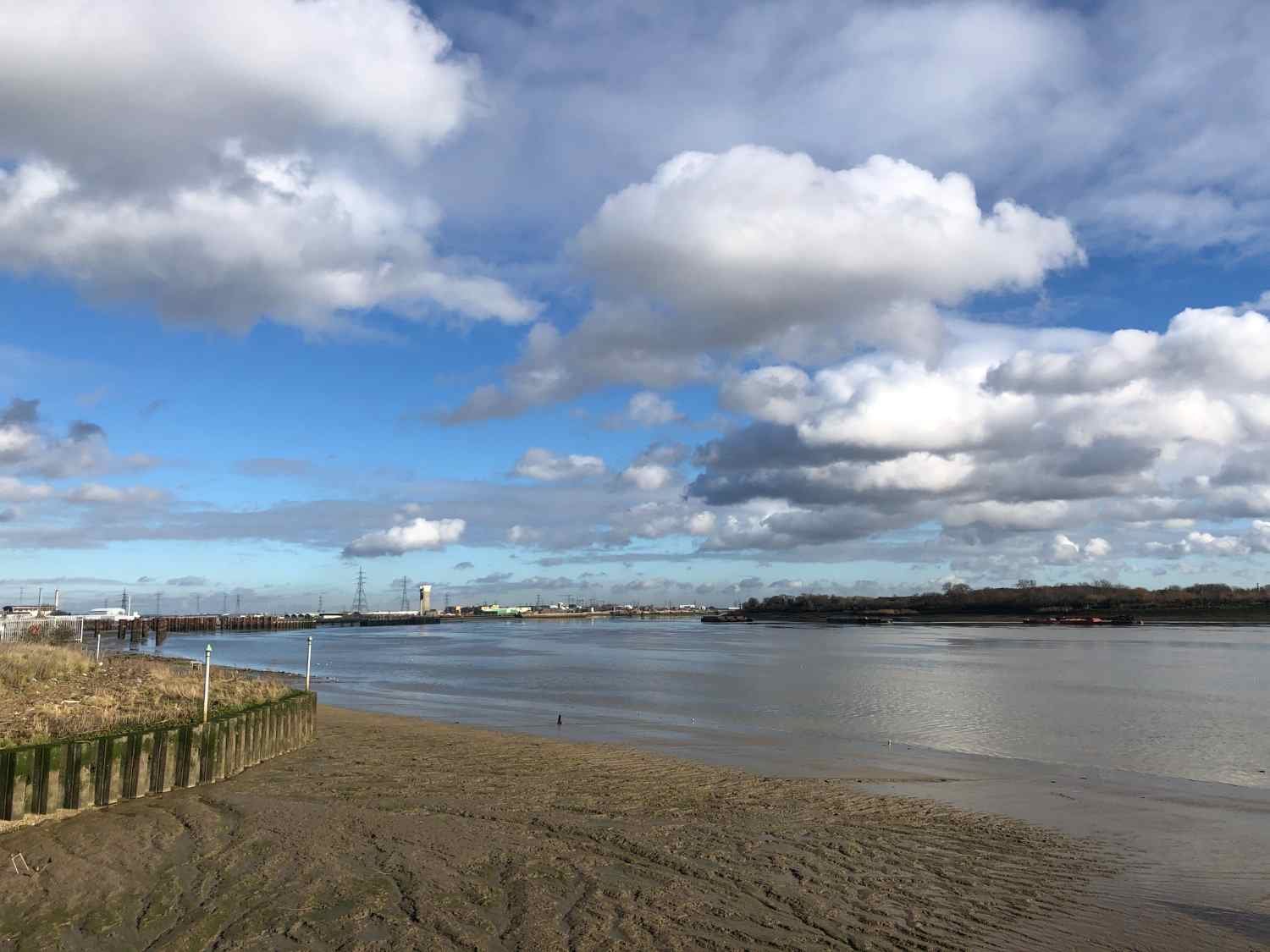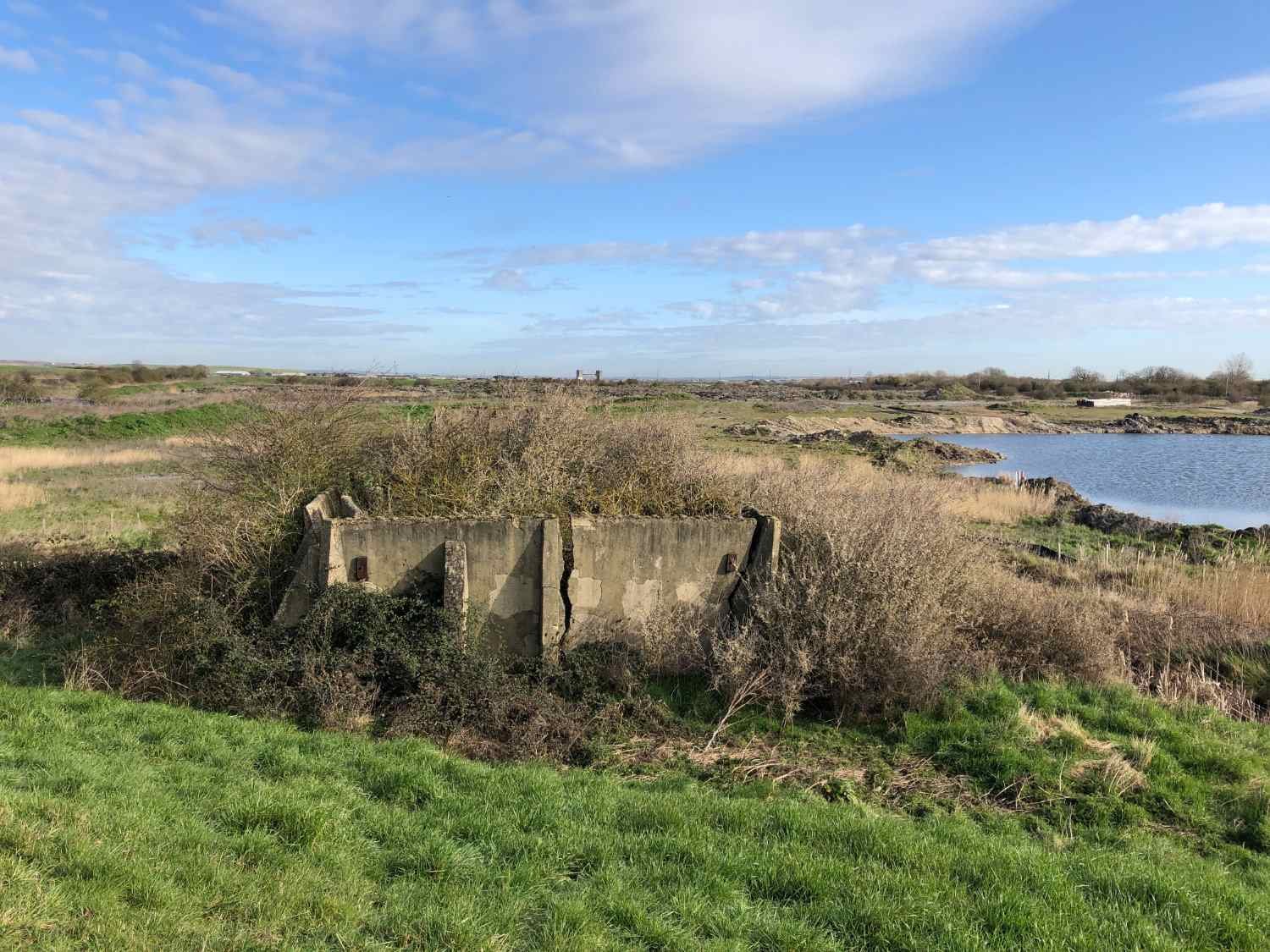82km A tale of two ferries
UPDATE ON THIS ROUTE (April 2024)
As from March 2024, Jetstream have withdrawn the Tilbury-Gravesend Ferry, so the route as described is not possible for the foreseeable future. Gravesend are negotiating with various companies to reinstate the service. We will be notified should it resume.
An alternative is to ride the route from Woolwich to the QE Bridge - the one in the photo above - where there’s a free mini bus shuttle service for you and your bike. It makes for a much shorter route, but it’s still a loop.
We will create another route along the Thames Estuary during the summer, as the riding is superb. Consider keeping in touch with developements by subscribing using the link below.
Overview
London Gravel riding at its wildest best.
“Estuaries of rivers appeal strongly to an adventurous imagination…… the estuary of the Thames is not beautiful; it has no noble features, no smiling geniality,” (Joseph Conrad), but with its big skies, salty mud flats populated with tens of thousands of birds, and its magical light, it is a haunting and beguiling place to be. The adventure takes you to a part of the city which even life-long Londoners aren’t familiar, to Tilbury fort which guarded the entrance to the great river, to the jetty where the Windrush people landed, and past the longest open air art gallery in Europe. You ride across horizon-expanding marshes where semi-wild horses graze and you pass under the monumental Queen Elizabeth II bridge at Dartford. There’s the juxtaposition of factories with their glistening pipes set against the sky, billowing smoke and steam and which have an SSSI right outside the door. You ride past river banks smothered with the immutable scent of violets, past jetties and quays which are quietly crumbling back into the silt, and a medieval church standing hard beside a pink clad soap factory. You’ll see ships from all over the world sail up the grey river and dock along its banks. And alternating with the industry are nature parks, SSSIs, and more wildlife than you’d believe possible. You might not see them, but along the route is a quarter of the UK’s water beetle population! The riding is often gritty, characterised by summer’s dust or winter’s mud, but it’s never dull and forever memorable.
Reviewed and revised April 2023








Ride practicalities
START/FINISH: Woolwich Ferry Pier DISTANCE: 87km. TOTAL ASCENT: 449m TERRAIN AND SURFACES: A mix of segregated cycleways and rough tracks. there are less than 5km of roads. After Dartford, the shared path is asphalted and forms part of the NCN Route 1. There are two short flights of steps over which the bike must be carried near Thurrock. Maps mark some of the route as ‘footpaths’, but the reality is that more cyclists use this often remote and unpeopled land far more than walkers. FOOD: Woolwich; Chealson’s Coffee, Royal Arsenal, The Blue Nile (after 6pm), Rainham; Rainham Hall (NT) The Stableyard cafe, Tilbury; The World’s End, Gravesend; Marie’s Tearooms PUBLIC TRANSPORT: UBER Thames Clipper Ferries, Woolwich and Tilbury Ferry (bikes and passengers are carried free on all three, other than the Tilbury Ferry, for which there is a small passenger fee) MAINLINE TRAIN SERVICES: Woolwich DLR Links to other rides: NCN 13, Brentwood to Rainham, London to Rochester Far Eastern Gems, Purfleet to Paddington, NCN1 Dover to London
Ride Notes
The sky is spring-blue and the wait for the ferry is short. In the far distance the damascene Thames barrier gleams and the distant towers of Canary Wharf become light-grey columns of some distant Xanadu. The Woolwich ferry which has been transporting passengers across the river since at least the fourteenth century arrives. Once in North Woolwich, you begin a multi-layered ride, skirting the Royal Docks, which 100 years ago were the largest of their kind in the world. Thence, you continue to Barking, an eastern outpost of London and although maligned and poor, it’s place of superlatives. It has in its time been home, to one of the most powerful abbeys in the land, its port was the centre of Europe’s largest fishing fleet, the surrounding flat marshlands were the site of Britain’s first airfield, and in the twentieth century, Britain’s largest coal power station was sited here. Today, new chapters of its proud history are being written; the first direct goods train arrived from China in 2021 and the Barking Riverside regeneration project is set to become London’s largest new town.
Bank of violets, Thurrock
The riding is on C3, a segregated bike lane. It’s a nosiy, and dusty few kilometres as you ride through industry, and beside the A13, which has been dubbed the ugliest road in Britain. Peace and and the great plains of the marshlands begin at Rainham. Traffic becomes a distant hum, the reeds rustle in the wind, stonechats and willow warblers twitter away. Unseen skylarks sing their crystal songs up in the blue sky. The cycle path follows the river, passing the concrete hulks of the WWII barges which formed part of the D-Day assault and ships throb their way around the wide bends of the silver-grey river. You ride around the great, green mound of Rainham landfill under which, is more than 150 years of London’s rubbish. Today, it is being re-fashioned into a country park.
Grape Hyacinths and Hedley's Soap Factory
The next few kilometres take you past both the industrial old and the new - from the Ford Motors Dagenham Plant to old gunpowder depots. Along the way are treasures for the curious - the place where Dracula stored his 50 cases of Transylvanian earth in Purfleet and St. Clement’s Church in West Thurrock, a beautiful medieval church set cheek-by-jowl against a lurid pink soap factory. The un-paved path is lined with wild flowers, where wild violets and bluebells grow and the hedges burst with blossom or berries depending on the season. The sky is filled with huge flocks of birds flying over-head (this whole area is of international importance), and amidst all this nature and crude industry, is a 2 kilometre wall displaying some of the finest - and constantly changing - wall art in the UK.
Blackthorn hedges at Tilbury
Soon Tilbury docks are reached, and you’ll pass the jetty where the Windrush migrants docked in 1948, and just beyond that is the low-lying fort built to protect river approaches to London. Even today as a heritage site, it looks mean and menacing, ready to fire upon any unwelcome intruder. A little way beyond it, is one of London’s notorious smuggler’s inns, The World’s End, where you might grab a pint as you wait for the regular ferry back across the river to Gravesend.
Tilbury Fort
The South bank is no less wonderful than the north; the mosaic of grasslands, salt marsh and scrub of the Broadness and Swanscombe marshes are one of the most diverse and varied wild spaces in England. They are home to nightingales, cuckoos, and the elusive grasshopper warbler. Ducks like shoveler and pochard breed in the fleets and dykes, whilst marsh harriers patrol the reedbeds. In a few places, derelict buildings from previous developments have become important spaces for rare birds such as black redstarts. As you ride, you’ll probably not see them, but the marshes are home to some of the best named insects in the land, ranging from the endangered Duffey’s bell-head spider, the critically endangered Distinguished jumping spider and the Saltmarsh shortspur beetle. The riding is joyously wild on a wide and rough path, which can be muddy after wet weather, ridged and lumpy after summer droughts. People here are rarer than the endgangered insects.
You continue under the massive QE bridge towards Dartford on un-paved paths through rough pasture where semi-wild horses graze. The skies are huge, the city distant. As you ride across the Cray marshes you’ll notice some of the remnants of a large munitions and fireworks factory which manufactured many of the shells destined for the WWI trenches.
QE Bridge
The last leg of the ride follows the banks of the Thames on the asphalted Q14 cycleway, a greatly underused, lovely and entirely traffic free route. If you have not run out of time, it is well worth deviating into Gallions Reach Park to climb the mound at its centre for a memorable view of London.
Eventually, you arrive back in Woolwich, with its Arsenal and Peter Burke’s iron statues. The ride finishes at the wharf where the Uber Thames Clipper will whisk you back into the city’s centre; the river views will be fine but tame, after the wild edgelands of the eastern reaches.
Peter Burke's Iron Men






